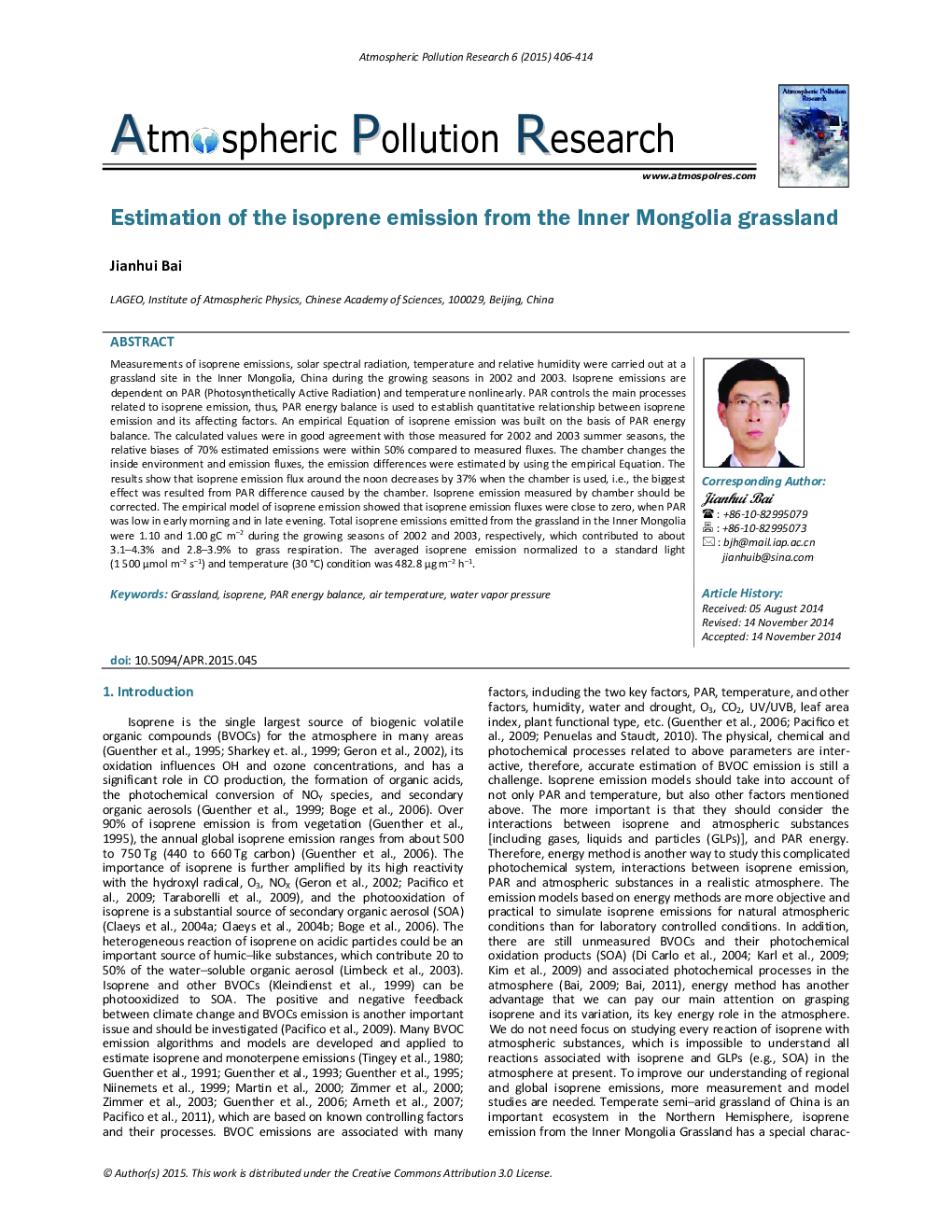| Article ID | Journal | Published Year | Pages | File Type |
|---|---|---|---|---|
| 4434563 | Atmospheric Pollution Research | 2015 | 9 Pages |
Measurements of isoprene emissions, solar spectral radiation, temperature and relative humidity were carried out at a grassland site in the Inner Mongolia, China during the growing seasons in 2002 and 2003. Isoprene emissions are dependent on PAR (Photosynthetically Active Radiation) and temperature nonlinearly. PAR controls the main processes related to isoprene emission, thus, PAR energy balance is used to establish quantitative relationship between isoprene emission and its affecting factors. An empirical Equation of isoprene emission was built on the basis of PAR energy balance. The calculated values were in good agreement with those measured for 2002 and 2003 summer seasons, the relative biases of 70% estimated emissions were within 50% compared to measured fluxes. The chamber changes the inside environment and emission fluxes, the emission differences were estimated by using the empirical Equation. The results show that isoprene emission flux around the noon decreases by 37% when the chamber is used, i.e., the biggest effect was resulted from PAR difference caused by the chamber. Isoprene emission measured by chamber should be corrected. The empirical model of isoprene emission showed that isoprene emission fluxes were close to zero, when PAR was low in early morning and in late evening. Total isoprene emissions emitted from the grassland in the Inner Mongolia were 1.10 and 1.00 gC m−2 during the growing seasons of 2002 and 2003, respectively, which contributed to about 3.1–4.3% and 2.8−3.9% to grass respiration. The averaged isoprene emission normalized to a standard light (1 500 μmolm−2 s−1) and temperature (30 °C) condition was 482.8 μg m−2 h−1.
